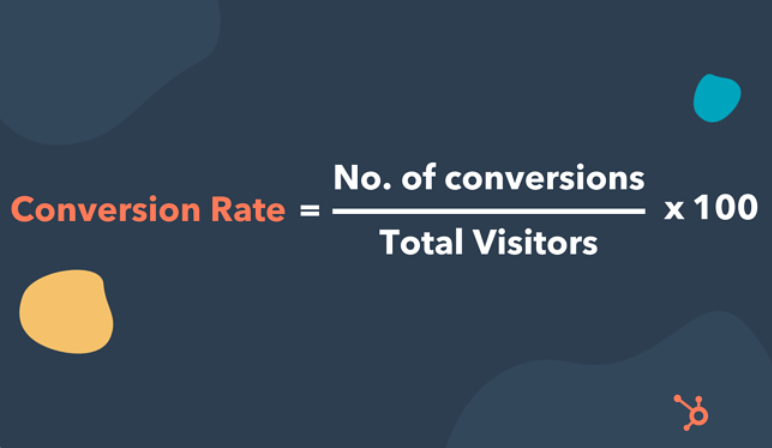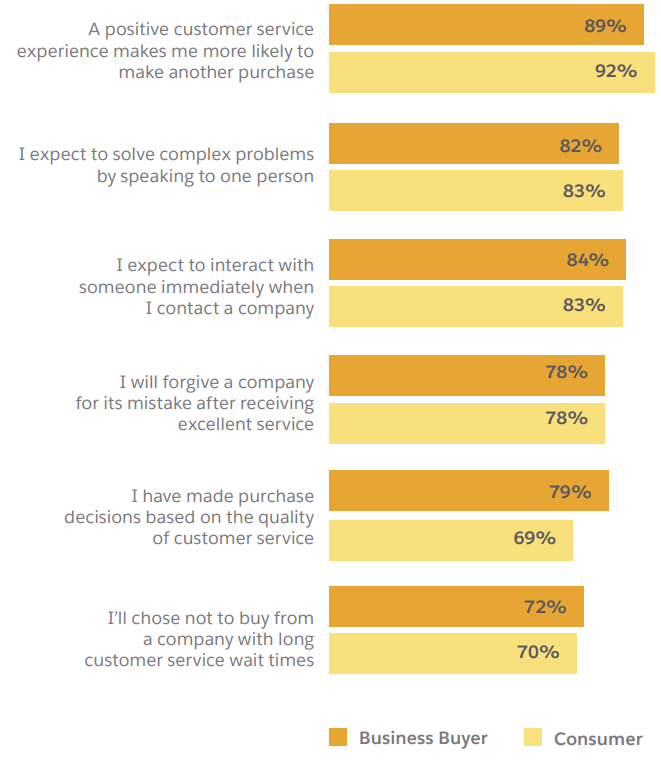In today’s highly competitive ecommerce landscape, businesses must continuously refine their strategies to stand out from the crowd and maximize their sales potential. While online analytics tools have become a go-to resource for understanding customer behavior, one valuable data source is often overlooked: call analytics.
With more customers reaching out to businesses through phone calls, call analytics has emerged as a powerful tool to gain deeper insights into consumer preferences and improve ecommerce strategies.
Call analytics involves collecting, analyzing, and interpreting data derived from customer phone calls. It goes beyond call tracking and comprehensively understands customer interactions, sentiments, preferences, and pain points.
By leveraging advanced technologies such as natural language processing and sentiment analysis, businesses can tap into a wealth of information hidden within these conversations, providing them with a competitive edge in ecommerce.
As the ecommerce industry evolves, understanding customers’ wants, needs, and expectations is critical for businesses aiming to deliver personalized experiences and drive growth. By harnessing the power of call analytics, brands can unlock a deeper understanding of customer behavior and preferences, enabling them to make data-driven decisions that yield positive results.
Join us as we explore the untapped potential of call analytics and discover how it can revolutionize ecommerce strategies, providing businesses with the tools they need to thrive in an increasingly competitive digital marketplace.
What Is Call Analytics?
Every ecommerce business needs to know how its customers interact with them to optimize their strategies and increase conversions. It is significantly important now when we create so much data daily that it becomes impossible to handle or keep track of it manually. According to Visual Capitalist, global data production is predicted to reach 463 exabytes per day by 2025, equivalent to 212,765,957 DVDs. Regarding phone calls, another study shows that call centers, on average, make 4400 calls a month. Businesses need to know how to collect this amount of information carefully and analyze it afterward.
Analyzing this data can provide invaluable insight into customer behavior, enabling businesses to understand their target audiences better and develop more effective marketing initiatives.
With a comprehensive web analytics platform for CRO and behavior analytics, businesses can gain valuable insights into their online presence. A platform like this provides real-time data visualization, customizable dashboards, and detailed reports, empowering users to monitor their website’s performance, identify opportunities for improvement, and maximize their online marketing efforts.
Call analytics refers to collecting, analyzing, and interpreting data derived from customer inbound phone calls. It involves capturing and organizing information about the callers, call duration, call frequency, call outcomes, and the conversations’ content.
This data can then be subjected to various analytical techniques and tools to extract valuable insights, trends, and patterns that inform business strategies and decision-making processes.

What Information Does Call Analytics Provide?
Call analytics can provide detailed information about the callers, including:
- Caller identification: Call analytics can identify the phone number and caller ID of the person making the call. This information can help businesses track and associate calls with specific customers or leads.
- Demographics: Call analytics tools can provide demographic information about the caller, such as their age, gender, location, or other relevant details. This data helps businesses understand their customer base and tailor their marketing and sales strategies accordingly.
- Call duration and time: Call analytics tools record the duration of each call and the time when the call was made. This data can help businesses analyze peak call times, identify trends, and optimize staffing and resource allocation.
- Call source: Call analytics can track and attribute calls to specific marketing campaigns, channels, or sources. It allows businesses to understand which marketing efforts are driving phone calls, helping optimize marketing spending, and measuring different channels’ effectiveness.
- Call outcome: Call analytics can track the outcome or result of each call, such as whether it led to a sale, appointment, inquiry, or other desired action. It helps measure the conversion rate and effectiveness of marketing campaigns and allows businesses to focus on optimizing high-converting calls.
- Call recording and transcripts: Advanced call analytics solutions may include call recording capabilities, which allow businesses to listen to or review transcripts of the calls. It provides valuable insights into customer inquiries, concerns, objections, or feedback, which can be used to improve sales and customer service strategies.
How Does Call Analytics Work?
Call analytics is an essential process that utilizes advanced technology and analytical techniques to collect, analyze, and interpret data from customer phone calls. By extracting valuable insights from these interactions, businesses can make data-driven decisions, improve customer experience, and optimize their strategies. Let’s see the step-by-step process of how call analytics work.
| Data Collection | The call analytics process begins with collecting relevant data from customer phone calls. It includes call duration, caller ID, call timestamps, call outcomes, and so much more. Call tracking systems or integrated call analytics platforms capture this data, allowing businesses to view customer interactions comprehensively. |
| Call Recording | In some cases, businesses choose to record phone conversations to gain deeper insights. Call recording allows for a detailed review of customer interactions, enabling accurate analysis of customer needs, agent performance, and call quality. These recordings can provide valuable context and support more in-depth analysis. |
| Data Storage and Organization | Once collected, the call data is stored and organized in a centralized system or database. It ensures easy access and retrieval for analysis purposes. The data is often associated with unique identifiers such as customer IDs or call IDs, facilitating cross-referencing and correlation of information. |
| Transcription | If call recordings are available, they can be transcribed into text form. It can be done manually by human transcribers who listen to the recordings and transcribe the conversations verbatim. Alternatively, automated speech-to-text technologies powered by machine learning algorithms can automatically convert spoken words into written text. Transcription facilitates further analysis and enables applying natural language processing (NLP) techniques. |
| Natural Language Processing (NLP) | NLP techniques play a vital role in call analytics. These algorithms analyze the transcribed text to extract valuable insights at a semantic level. By identifying keywords, topics, sentiment, intent, and other linguistic patterns, NLP enables businesses to understand customer needs, preferences, and pain points. It categorizes calls, detects emotions, and provides a deeper understanding of customer sentiment. |
| Sentiment Analysis | As a subset of NLP, sentiment analysis determines the emotional tone and sentiment expressed in customer conversations. It classifies sentiment as positive, negative, or neutral based on language, context, and other indicators. Sentiment analysis allows businesses to gauge customer satisfaction levels, track sentiment trends, and identify improvement areas. |
| Data Analysis and Visualization | The processed call data, including NLP and sentiment analysis results, undergoes various analytical techniques. Statistical analysis, data mining, machine learning algorithms, and predictive modeling are applied to identify patterns, trends, correlations, and actionable insights within the dataset. Visualization tools, such as charts, graphs, or dashboards, present the findings clearly and concisely, facilitating understanding and decision-making. |
| Insights and Actionable Recommendations | The ultimate goal of call analytics is to derive actionable insights that drive business improvement. Businesses gain valuable information about customer preferences, pain points, and behavior by interpreting the analyzed data. These insights inform decision-making processes, allowing companies to optimize strategies, enhance customer experience, and improve operational efficiency. By implementing changes based on the findings, businesses can drive positive outcomes, increase customer satisfaction, and achieve their goals. |
What Are the Benefits of Call Analytics for Ecommerce Strategies?
Call analytics is crucial in informing ecommerce strategies by providing valuable insights into customer interactions, preferences, and pain points. Here are several ways in which call analytics can inform and optimize ecommerce strategies:
Customer Behavior Analysis
By analyzing call data, including customer inquiries, product-related questions, and complaints, ecommerce businesses can better understand customer behavior. Call analytics reveals common patterns and trends, enabling brands to identify popular products, customer preferences, and emerging market demands. This information can inform inventory management, marketing campaigns, and product development strategies.
Lead Generation and Qualification
Businesses can significantly improve their lead generation and qualification processes with detailed information about the callers, such as demographics, location, and call duration. By analyzing the captured data, they can identify high-quality leads, understand their needs, and focus on them, among other leads. Thus, a comprehensive grasp of various channels makes it possible to effectively collect leads from Facebook group, advertising campaigns, and landing pages, then segment them for more targeted marketing efforts.

Personalization and Customer Experience Enhancement
Salesforce has surveyed more than 6,000 consumers, and the results showed that 66% of them thought businesses ought to be aware of their needs and expectations. The same study says that 56% expect all offers to be personalized.
Call analytics helps businesses understand individual customer needs and preferences, enabling them to identify specific customer requirements by dissecting the call recordings and transcriptions and tailoring their offerings accordingly.
As a result, brands can make personalized recommendations, deliver improved customer service, and ensure a remarkable customer experience. Call analytics can also identify areas where customer service can be improved, helping businesses address pain points and resolve issues more effectively.
Conversion Rate Optimization
Conversion rate optimization (CRO) involves the following:
Systematic improvements of the various elements of a website or digital platform aimed to increase the percentage of visitors who convert into customers or take desired actions, such as purchasing, filling out a form, or subscribing to a newsletter
What is a company’s good or bad conversion rate, and how to count it? The standard conversion rate most ecommerce websites target is 2.35%, but every company can calculate its conversion rate using the following formula:

Source: HubSpot
Call analytics provides insights into the factors that influence conversion rates. Businesses can determine which products or services generate the most sales or inquiries by analyzing call outcomes.
They can identify the keywords or marketing campaigns that drive phone calls, allowing for better allocation of advertising budgets. Businesses can optimize their sales processes and website usability to increase conversion rates by understanding the reasons for lost sales or abandoned shopping carts.
Marketing Campaign Effectiveness
Call tracking and analytics allow businesses to attribute phone calls to specific marketing campaigns or channels. By tracking the performance of different campaigns, marketers can measure the effectiveness of their marketing efforts. They can identify which campaigns generate the most phone leads, conversions, or revenue. This data helps allocate marketing resources to the most successful channels and refine marketing strategies for better ROI.
Competitive Analysis
Call analytics can provide insights into how businesses compare to their competitors. By monitoring customer inquiries, feedback, and complaints, brands can identify gaps in their competitors’ offerings and capitalize on those opportunities. Understanding customer sentiments and preferences regarding competitor products or services help businesses refine their value proposition and differentiate themselves in the market.
Customer Service Improvement
Seamless customer service is what every customer expects to receive, and every company expects to provide. Take a look at some of the statistics done by Salesforce. It appears that 92% of customers and 89% of business buyers are more likely to make another purchase, having had a positive customer service experience.

Source: Salesforce
Call analytics can help to improve customer service by offering a wealth of information. By analyzing call recordings, businesses can evaluate the performance of their customer service representatives, identify training needs, and improve overall service quality. Insights from call analytics can be used to develop best practices, streamline processes, and ensure consistent and positive customer interactions.
New Product Development
By analyzing customer inquiries and feedback from calls, ecommerce businesses can identify gaps in the market and uncover potential opportunities for new product development. Call analytics can reveal emerging customer needs, preferences, and pain points that may not be evident through other channels. This information guides businesses in creating innovative products that address customer demands and gain a competitive edge.
Leveraging Call Analytics for Ecommerce Strategies
Call analytics plays a crucial role in optimizing ecommerce strategies. By harnessing the power of call tracking and analysis, businesses can gain valuable insights into customer behavior, preferences, and pain points. This information enables companies to make data-driven decisions, improve customer experiences, and drive growth in the highly competitive ecommerce landscape.
Call analytics provides businesses with detailed information about callers, including caller identification, demographics, call duration and time, call source, call outcome, and even call recording and transcripts in advanced systems. This data allows businesses to understand their customer base, tailor their marketing and sales strategies, and optimize resource allocation.
Through call analytics, businesses can analyze customer behavior, identify popular products, and understand emerging market demands. This information helps improve inventory management, marketing campaigns, and product development strategies. Call analytics facilitates lead generation and qualification by providing insights into high-quality leads and customer needs.
Personalization and customer experience enhancement are also key benefits of call analytics. By analyzing call recordings and transcriptions, businesses can understand individual customer needs and preferences, leading to personalized recommendations, improved customer service, and enhanced overall customer experience.
Call analytics helps optimize conversion rates by identifying factors influencing sales and abandoned shopping carts, enabling businesses to refine sales processes and website usability. It also provides insights into the effectiveness of marketing campaigns, allowing marketers to measure the performance of different channels and allocate resources for better ROI. It facilitates competitive analysis by monitoring customer inquiries and feedback, helping businesses identify gaps in the market and differentiate themselves from competitors.
Moreover, call analytics improves customer service by evaluating customer interactions, identifying training needs, and ensuring consistent service quality. Last but not least, call analytics uncovers opportunities for new product development by analyzing customer inquiries and feedback. This information guides businesses in creating innovative products that address customer demands and stay ahead of the competition.










